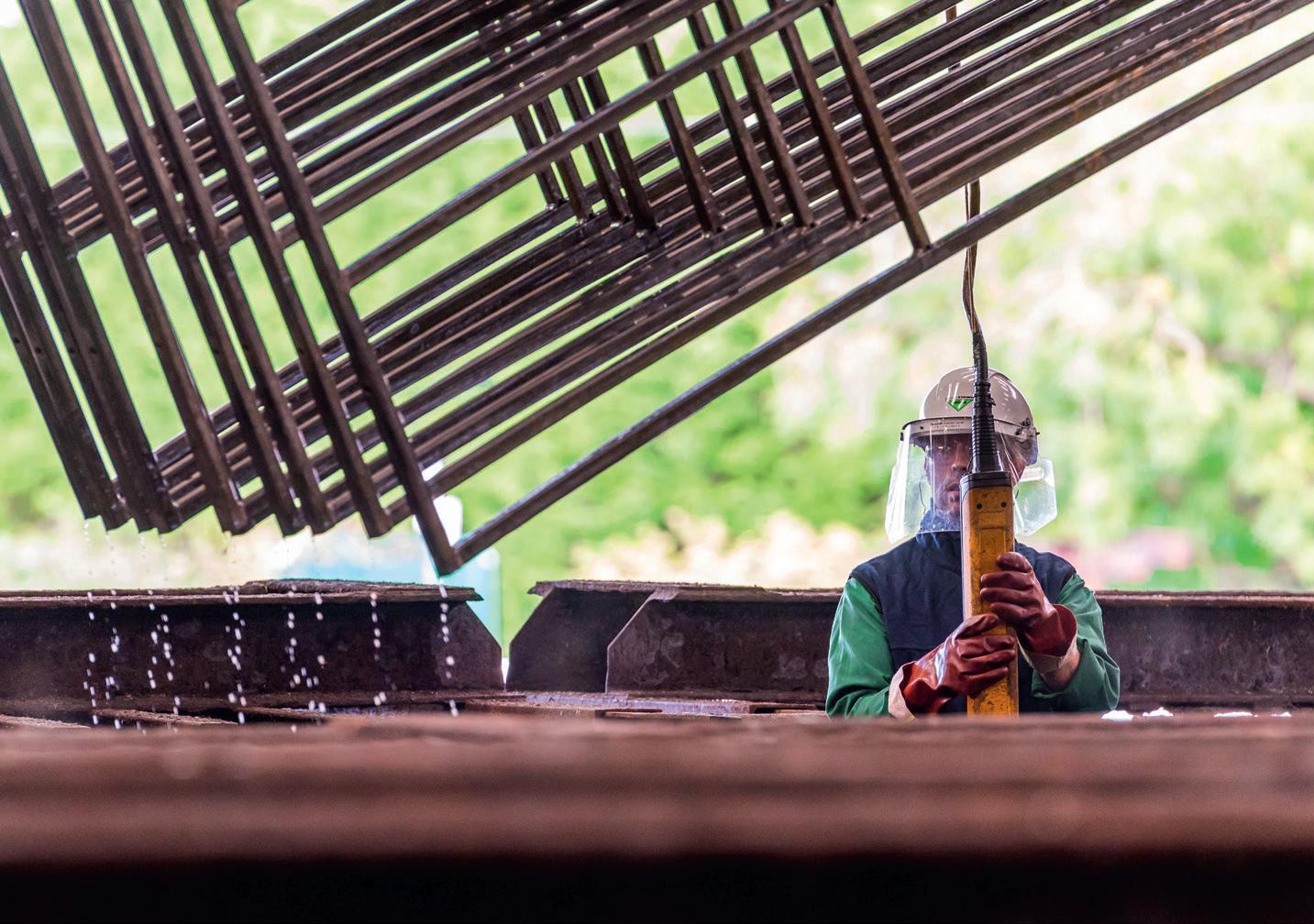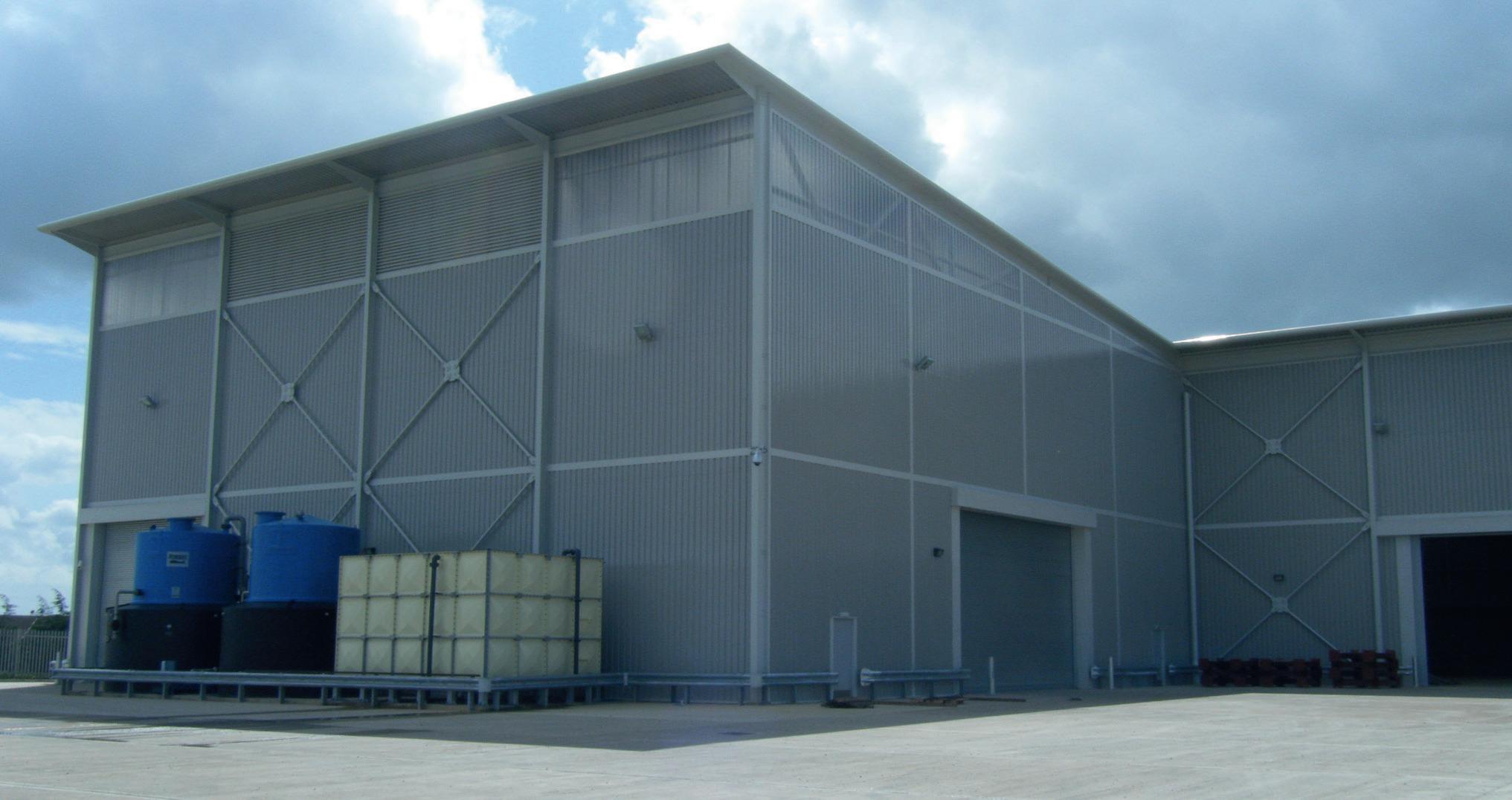
6 minute read
Surveying and Geotechnical Engineering
Galvanizing: a sustainable finish for the rail sector
Andy Harrison, Director of Sales and Marketing at Wedge Group Galvanizing Ltd, the UK’s largest hot-dip galvanizing organisation, describes how galvanizing works, why it continues to be one of the most sustainable finishes for eco-conscious rail projects, and what advancements are being made to make the process even more green
As one of the most commonly used materials within the rail sector, steel is both durable and versatile – with applications ranging from platforms and stations to access equipment and overhead signalling systems.
As the industry continues to work on reducing its carbon footprint and meet ever-growing customer expectations, protecting the steel from corrosion and ensuring it can withstand harsh weather conditions is paramount.
Steel is a vital raw material used in the rail sector for a diverse range of applications, from large structural steelwork through to smaller nuts and bolts. But it’s highly prone to corrosion – it’s estimated that worldwide, one tonne of steel turns to rust every 90 seconds and that means for every two tonnes of new steel produced, one is made to simply replace rust. Many rail organisations and those within its supply chains are becoming increasingly aware of the need to improve processes and operations to meet stringent national and environmental rules and regulations, as well as meet their organisational and stakeholder goals. These include focusing on wildlife and nature, and low emission railways, but perhaps most importantly, making continued upgrades to ensure the railways are more resilient to harsh weather conditions.
It’s this exposure to harsh environments which makes the steel used on rail projects more susceptible to accelerated corrosion — something which can be hugely costly not just on the purse strings, but on the environment.
What is Galvanizing? Hot Dip Galvanizing is a process developed to prevent steel from corroding and sees the metal immersed in a bath of molten zinc at a temperature of around 450 °C. During the process, a metallurgical bonded coating is formed which protects the steel from rust and corrosion. How does it work? Before the process can take place, the steel goes through a thorough chemical clean to remove all rust, oil and mill scale from the surface. When the cleaning process has been completed and the cleaning solution has been rinsed off, the coating process can begin. The steel is then fluxed and dipped into a bath of molten zinc that has been heated to around 450 °C (860 °F). The galvanized steel is then removed from the bath and left to cool.
Why is it so sustainable? Unlike other finishes or protective coatings, the process results in minimal waste, with any zinc that doesn’t instantly form a coating on the metal remaining in the galvanizing bath before being re-used.
Zinc’s non-ferrous properties enable it to be recycled again and again without any loss of its physical or chemical properties. Where galvanizing really comes into its own as a sustainable finish is its one-off nature – the process only needs to be carried out at the beginning of any construction project, but results in corrosion protection that can last up to 60 years depending on the environment it is used, without the need for any time or resource-intensive maintenance and replacement.
Not only does galvanizing lengthen the lifespan of steel by protecting it against rust and corrosion for many decades, but it’s extremely energy-efficient throughout its production and whole lifecycle. The process uses resources considerately to ensure a relatively low environmental burden, and galvanized steel can easily be recycled with steel scrap or re-galvanized, removed, and reused elsewhere.
The 50,000 litre rainwater harvesting tank at East Anglian Galvanizing


the past few years to refine and enhance the galvanizing process to further reduce its overall environmental impact.
As a company, Wedge Group Galvanizing is leading the way by introducing a number of highly-innovative and sophisticated elements to reduce waste, promote better use of resources, and improve energy efficiency. The company has introduced bespoke rainwater collection and harvesting systems, which sees rainwater stored on-site through a series of gutters and tanks before being recycled back into the galvanizing process.
Another example of how the company, and the wider industry, is cutting energy consumption is the reuse of ‘waste’ heat created from the furnaces used in the galvanizing process. All of its plants have been fitted with heat exchanger units that transfer the ‘waste’ heat generated back into the overall process for use within both the pre-flux and de-grease tanks. To further improve both fuel efficiency and performance, all plants also use the most innovative pulse-fired high velocity systems.
All 14 of its plants are also signed up to the Climate Change Levy Agreement and have committed to reduce energy use yearon-year.
Recent projects Wedge Group Galvanizing has partnered with civil engineering company Lundy Projects for more than a decade – playing a key role in Network Rail initiatives including the modernisation of the Great Western Mainline.
It worked on the £25 million project to transform Edinburgh’s Haymarket Station into a major transport link, with over 200 tonnes of steel galvanized for the production of canopies installed above the station’s newly extended platforms. The C503 Crossrail Contract refurbishment works at Liverpool Street Station also saw over 100 tonnes of steel protected long term with hot dip galvanizing.
Other projects the Wedge Group has been involved in include the galvanizing of steelwork used to construct a multimillion pound development on the Midland Metro line between Wolverhampton and Birmingham, and the refurbishment of the iconic Hull and Barnsley railway bridge which saw the team galvanize over 25 tonnes of structural steel in order to strengthen the bridge and ensure the track remained operational for its capacity. The team has also worked on the grade II Listed Silver Jubilee Bridge, one of the world’s longest steel arched bridges which runs over the River Mersey, connecting Runcorn to Widnes and which sees more than 80,000 motorists a day pass over it.
This diverse range of projects demonstrates the ever-growing popularity of galvanizing as a protective coating across the rail industry, and also highlights the qualities of the process – including
its flexibility, strength, and long-life - in addition to its inherent sustainable benefits.
About Wedge Group Galvanizing Ltd Proud to be the UK’s largest hot-dip galvanizing organisation, Wedge Group Galvanizing has a national network of 14 sites strategically located across the country. Privately owned and with a history dating back over 150 years, the company has built an enviable reputation for providing a leading galvanizing service and is the partner of choice for many large contractors and specifiers across the rail sector.
The organisation is also proud to be an approved audited supplier for the Railway Industry Supplier Qualification Scheme (RISQS), ensuring that any rail company it works with can be assured of high-quality galvanizing backed by excellent customer service. Every one of its plants operates a Class 1 Galvanizing bath which has agreed compositional limits and records of assessment retained for 10 years, as well as over 75 qualified personnel who are certified to the GA/BCSA Post-Galvanizing Inspectors Course.
For further information please contact Wedge Group Galvanizing on 01902 601944 or visit www.wedge-galv.co.uk.











